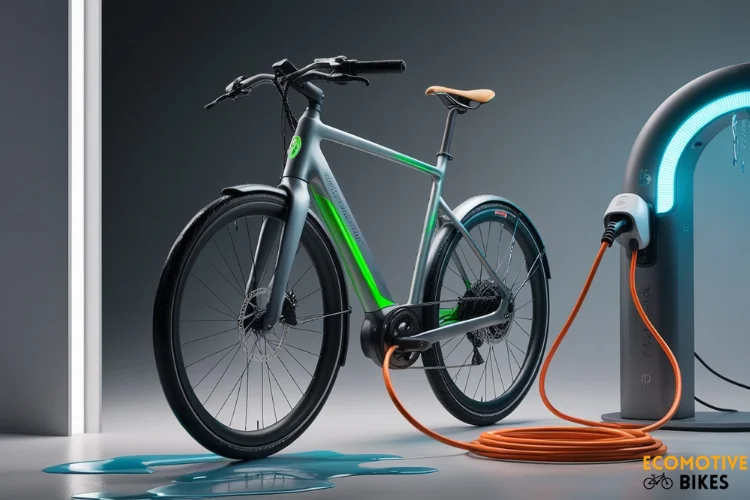Can I leave my e-bike battery on charge overnight?
Wondering if you can leave your e-bike battery on charge overnight? Learn about safety features and how extended charging can impact your battery's lifespan.
Table of Contents
Related Articles:
Ever rolled in late after a thrilling e-bike adventure, plugged in your trusty steed, and wondered – Can I leave my e-bike battery on charge overnight? This question plagues many e-cyclists, with visions of flickering lights and smoke alarms dancing in their heads.
Fear not, e-cyclists! I have the answer-cum-comprehensive guide that delves into the world of overnight battery charging and tells you about the best practices, safety considerations, and ultimately, unlocking a peaceful slumber while your e-bike is prepped for your next electric escapade.
Is it safe to leave an electric bike on charge overnight?
Overnight charging of an electric bike is generally safe if the battery and charger have protective features like overload and overheat safeguards. According to Battery University, modern chargers cut off power when the battery is full, reducing risks. However, consistent long-duration charging may reduce overall battery lifespan.

Here is a battery charging calculation guide that can help you understand how much time you should charge your battery.
What happens if the battery is overcharged?
One of the biggest concerns surrounding overnight e-bike charging is the risk of overcharging. Thankfully, modern e-bike technology assuages this fear. Both chargers and batteries are equipped with sophisticated safety features that prevent this from happening. Once your battery reaches its full capacity, the charger typically enters maintenance mode, essentially stopping the flow of excess current and safeguarding the battery from overcharging.
What are the risks of overnight charging?
While modern e-bikes boast safeguards against overcharging, let’s discuss the potential risks associated with extended charging periods and explore strategies to optimize both convenience and battery health.
- Potential for reduced battery life: Although most modern e-bikes come equipped with smart chargers that automatically shut off upon reaching full capacity, relying solely on this system might not be ideal for long-term battery health. While a single overnight charge is unlikely to cause significant damage, consistently leaving your battery plugged in for extended periods at full capacity can lead to a gradual reduction in its overall lifespan. This is because lithium-ion batteries, the technology powering most e-bikes, can experience minor degradation when held at full charge for extended durations.
- Overheating: In rare instances, prolonged overcharging, especially with a faulty charger or battery, can lead to overheating and potential fire hazards. While this risk is minimal with modern e-bike technology, it’s crucial to prioritize safety. Prolonged exposure to heat or using faulty charging equipment can have detrimental effects on battery health and safety.

Best practices for charging an electric bike overnight
Here, we explore best practices for overnight e-bike charging, empowering you to make informed decisions and maximize the lifespan of your e-bike’s most crucial component.
- Utilize the right equipment: Safety should always be the top priority when charging your e-bike. Always use the manufacturer-recommended charger that came with your e-bike. This charger is specifically designed to work safely and efficiently with your e-bike’s battery voltage and specifications. Additionally, ensure you’re using the charger with a compatible and properly grounded wall socket.
- Find the balance: Modern e-bikes boast sophisticated Battery Management Systems (BMS) that automatically shut off charging upon reaching full capacity. While occasional overnight charging is generally safe with these systems in place, it’s important to establish a charging routine that optimizes battery health over time. Consider a charging schedule that aligns with your typical usage patterns. For example, if your commute is shorter, allowing the battery to reach full capacity earlier in the day and then disconnecting it can be beneficial.
- Regular inspections: Proactive maintenance goes a long way in ensuring safe and efficient charging. Regularly inspect your charger and charging cable for any signs of damage, such as fraying wires or loose connections. Damaged components pose a safety risk and can hinder proper charging. If you detect any issues, replace the charger or cable immediately.
- Consult the manual: Your e-bike’s manual may offer specific recommendations on charging habits and best practices. Consulting this resource can provide valuable insights tailored to your specific model.
- Unplug when possible: Whenever possible, make it a habit to unplug your e-bike, especially after a full charge.
What is the best temperature to charge an e-bike battery?
Temperature plays a critical role in the health and performance of electric bike batteries. It directly affects a battery’s efficiency.Extreme temperatures, both hot and cold, can significantly impact battery capacity and overall lifespan. Charging in frigid environments can hinder the battery’s ability to accept and store a full charge, leading to a temporary reduction in capacity. Conversely, excessive heat can accelerate the degradation process within the battery, ultimately shortening its lifespan. Here, are the tips to optimize your e-bike battery’s health.
- The ideal charging temperature zone: To ensure optimal charging conditions, aim for a temperature range between 50°F and 86°F (10°C to 30°C). This moderate temperature zone allows the battery’s internal chemistry to function efficiently, maximizing both charging effectiveness and long-term battery health.
- Climate considerations: During sweltering summers, avoid leaving your e-bike in direct sunlight for extended periods, especially while charging. Similarly, during winter months, store your e-bike in a room temperature environment whenever possible before charging.
- Garage vs. home charging: If your garage experiences extreme temperature fluctuations, consider charging your e-bike indoors to maintain a more controlled environment.
- Post-ride charging: Allow your battery to cool down slightly after a ride before plugging it in for charging. This helps to prevent additional heat generation during the charging process.
Final Word: Can I leave my e-bike battery on charge overnight?
So, the answer to the overnight charging dilemma is not a simple yes or no. With modern technology providing a safety net, it is generally safe to leave your electric bike battery on charge overnight.But for the longevity-focused rider, a strategic approach is key. Follow manufacturer guidelines and proper practices and use the correct charger. However, it is imperative to avoid overcharging, monitor heat exposure, and ensure a safe charging environment to maximize the battery’s lifespan.





